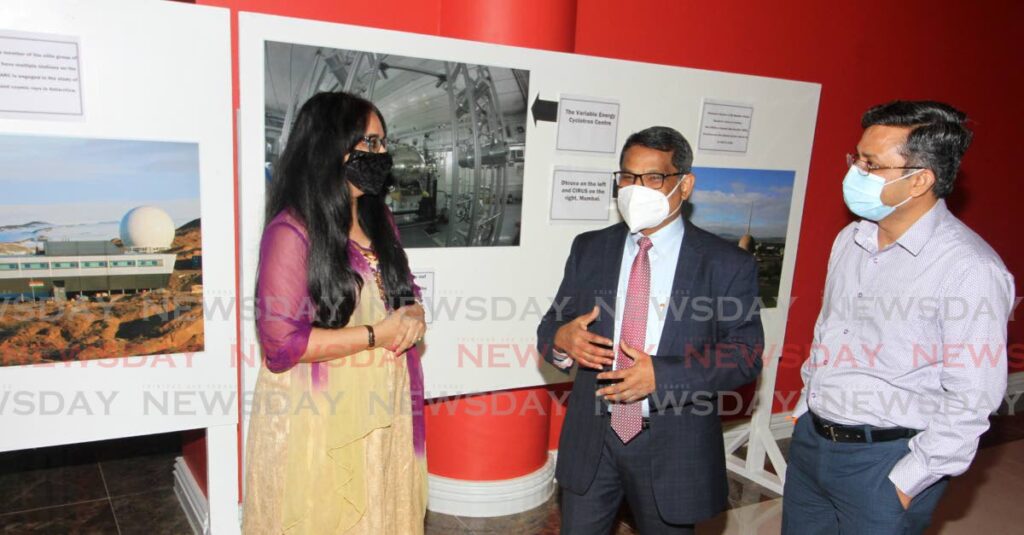Indian Cultural Institute launches nuclear exhibition

The Mahatma Gandhi Institute for Cultural Co-operation in Mt Hope has mounted a three-month exhibition about India’s progress in the nuclear sector, titled Atomic Energy of India: A Glorious Past, A Resplendent Future.
Speaking at the opening on Thursday, Indian High Commissioner to TT Arun Kumar Sahu said India had a long history with nuclear energy, which currently supplies its fifth largest source of energy.
“As early as 1901, the Geological Survey of India (GSI) recognised India's potential as a source of radioactive ores, including pitchblende, uranium and thorianite. During the 1920s and 1930s, India kept abreast of the latest developments in physics. Notable physicists, including Daulat Singh Kothari, Meghnad Saha, Homi J Bhabha and R S Krishnan, conducted pioneering research in nuclear physics. By 1939, Meghnad Saha began to conduct experiments related to atomic physics. In 1944, the Tata Institute of Fundamental Research (TIFR) was inaugurated in Mumbai. As early as June 1946, Jawaharlal Nehru announced that he had no doubts that the Indian scientists would use the atomic force for constructive purposes.”
He said nuclear energy is an essential component of India’s energy security and environmental protection. He said India is the only developing country to generate electricity using indigenously developed nuclear reactors.
“India has over 23 nuclear reactors in seven power plants, producing 6,780 milliwatts of nuclear power while reducing its contribution to global Green House Gases (GHG). India plans to increase the contribution of atomic energy to 25 per cent of the total power capacity in future. Efforts are also geared at using nuclear energy for basic sciences, astronomy, astrophysics, cancer research and education.”
Keynote speaker, head of UWI’s department of Physics, Dr Davinder Sharma said India has explored various types of energy, including nuclear, wind, and solar. He said nuclear energy was also useful for humanity if used for the correct purposes.
He said, at UWI, students were being offered training in various aspects of nuclear energy, with postgraduate degrees in renewable energy management, renewable energy technology, and medical physics. He said a new undergraduate course in atomic physics was also being offered. Sharma said the department was collaborating with state agencies in various capacities.
Feature speaker Dr Shirin Haque, senior lecturer in UWI's physics department, gave an overview of the history of nuclear physics, including the development of the atom bomb and the history of India’s nuclear programme.
Sahu said he hoped that over the next three months, people at large, academics, students, researchers, and media will take advantage of the exhibition.
The exhibition showcases not only the structures built in India to generate nuclear energy, but also the uses to which it is put, such as in mining and various medical applications.


Comments
"Indian Cultural Institute launches nuclear exhibition"